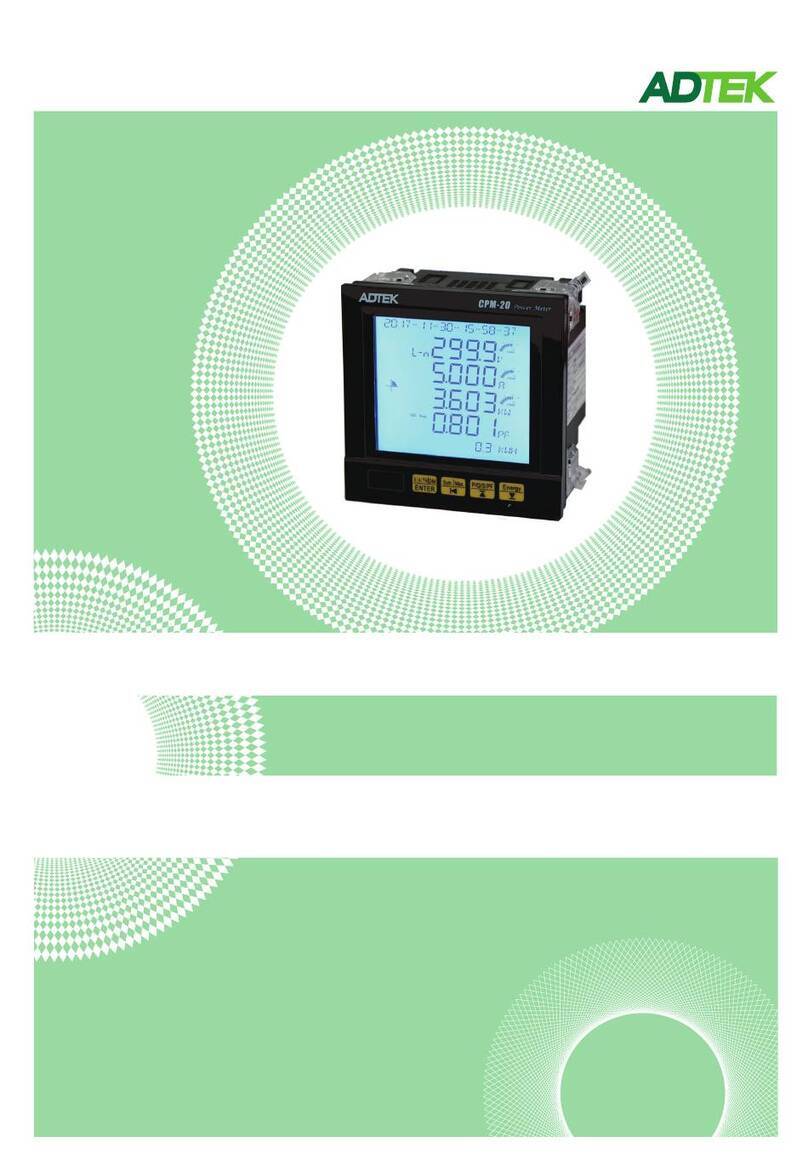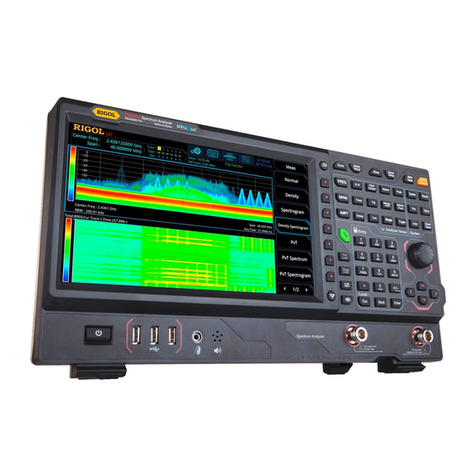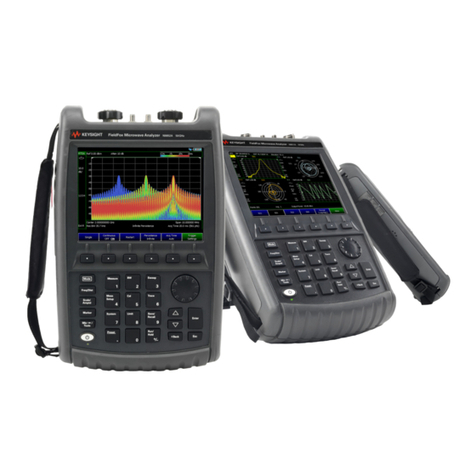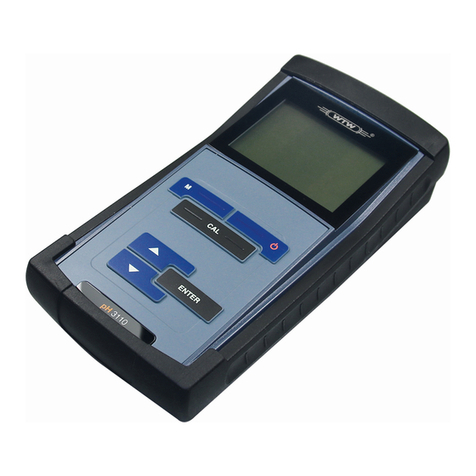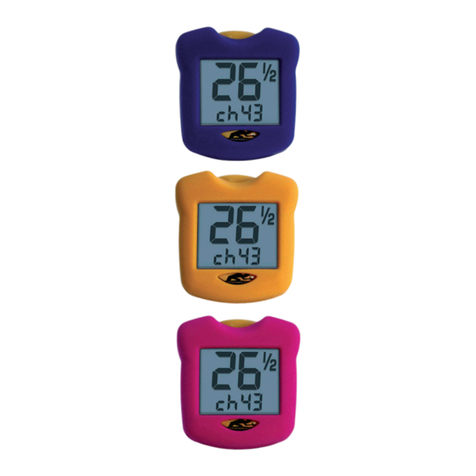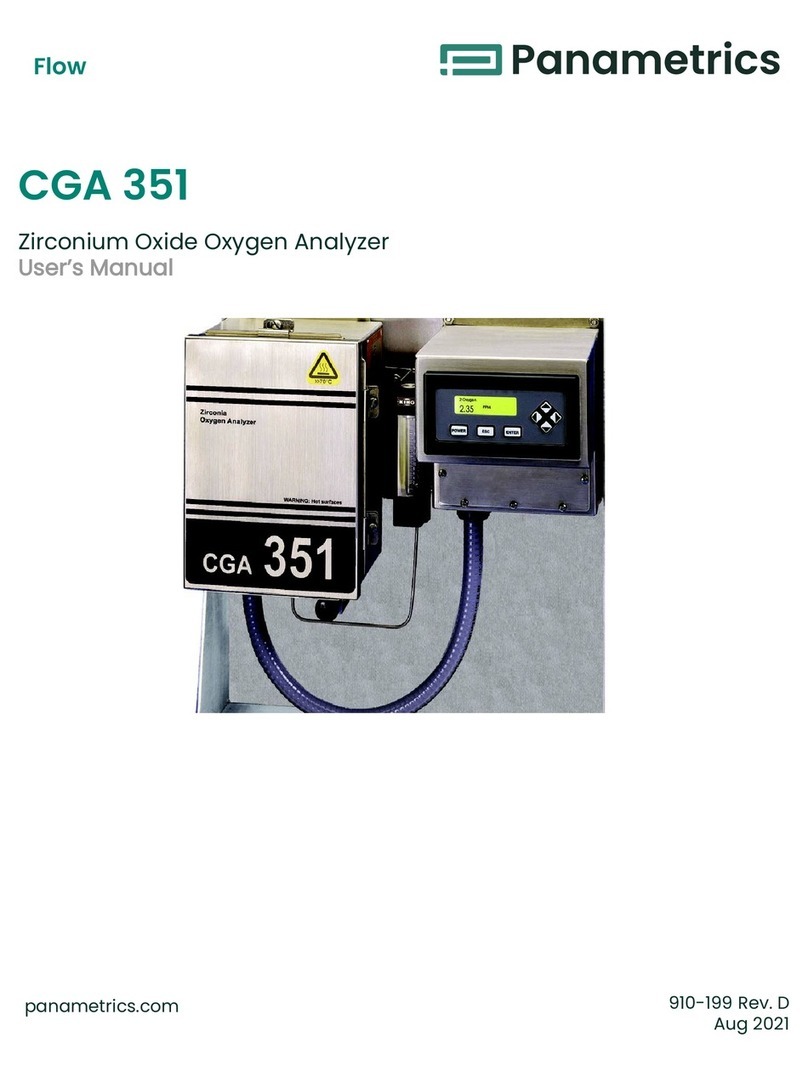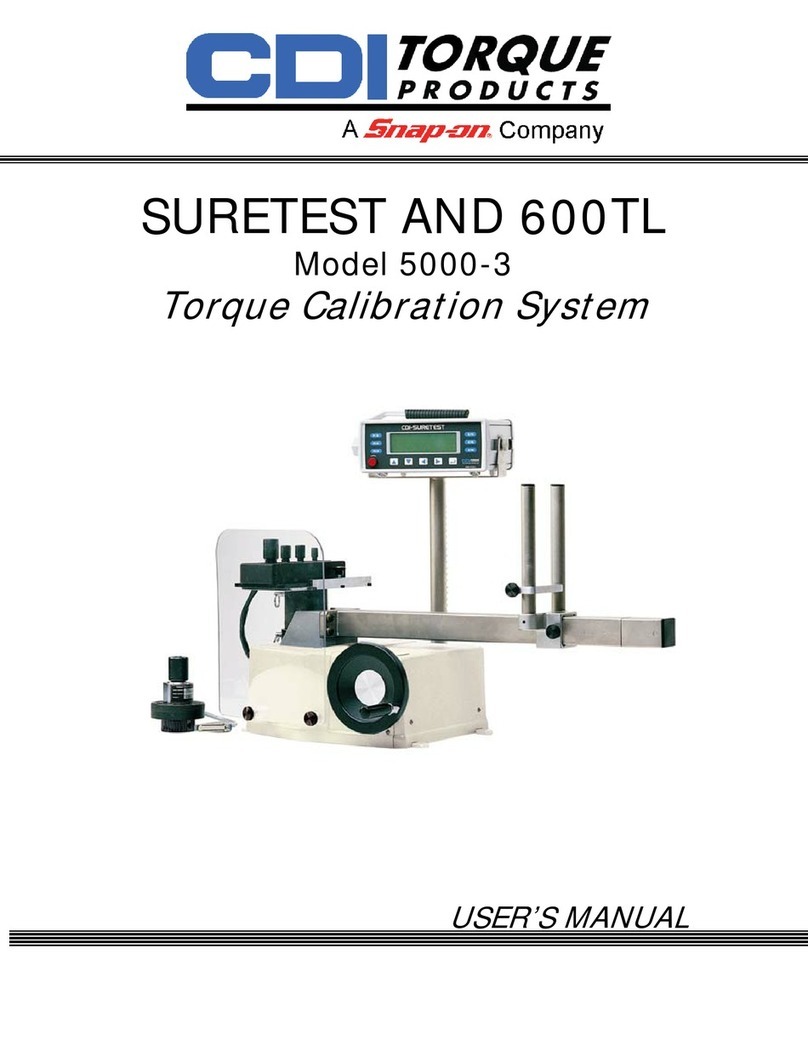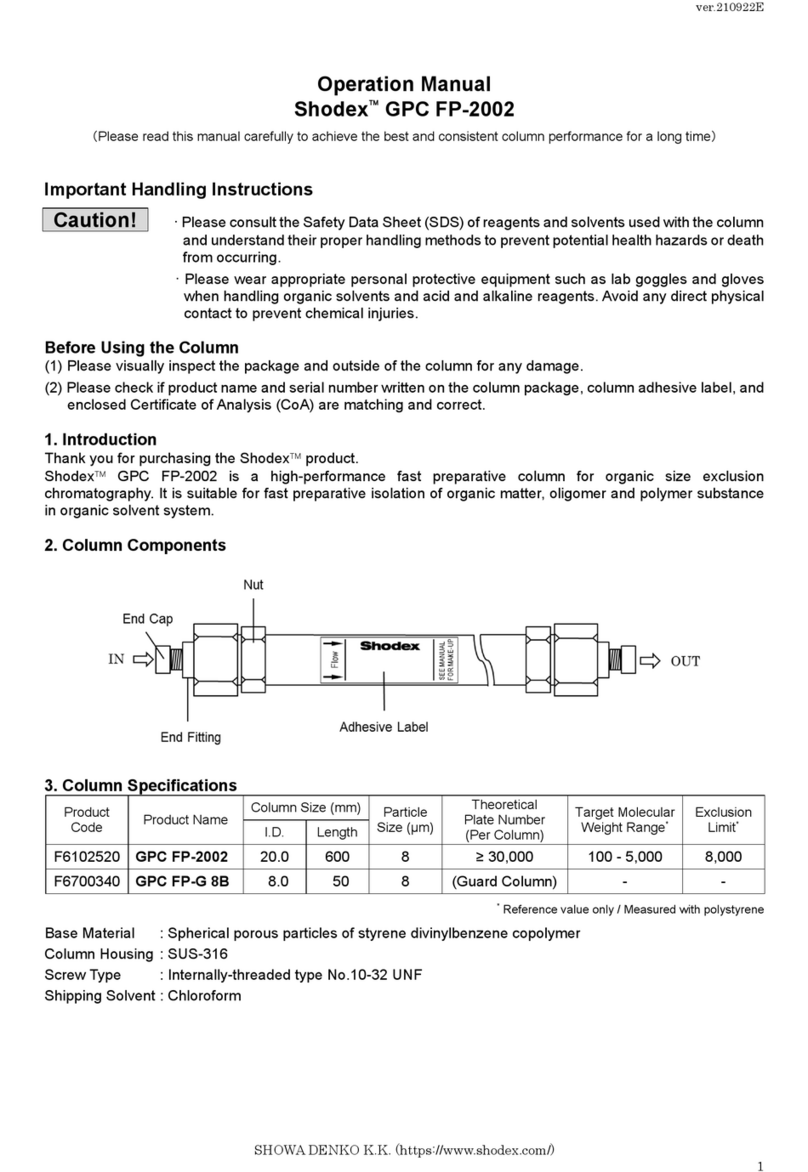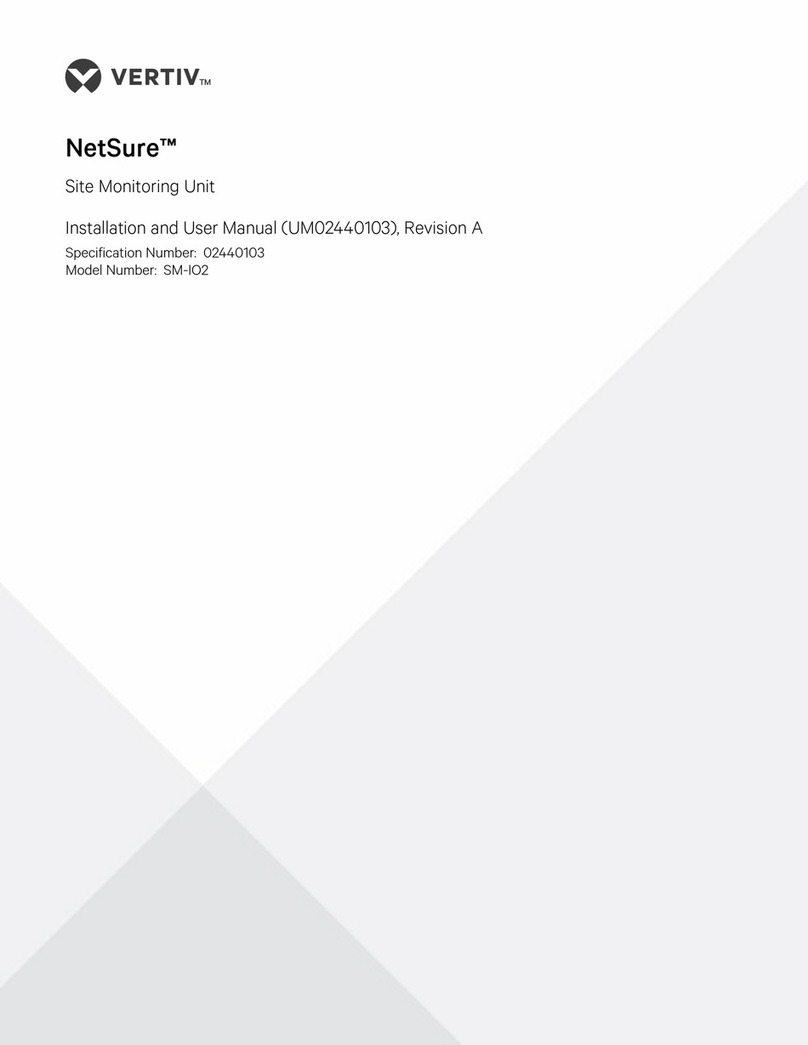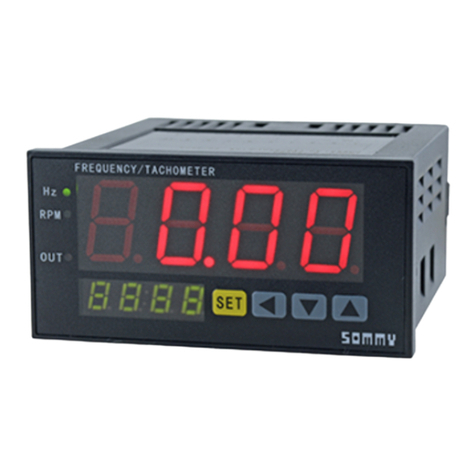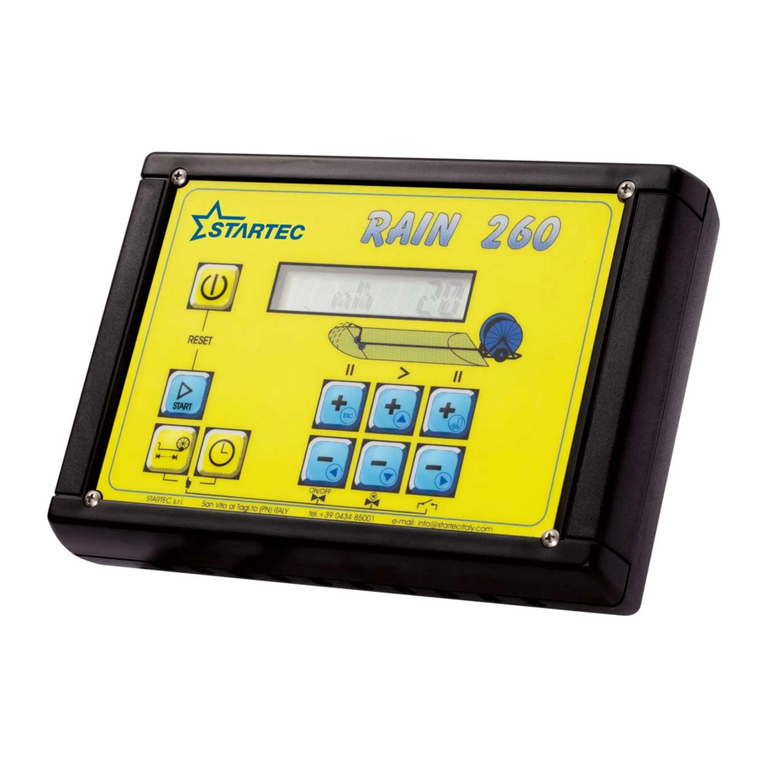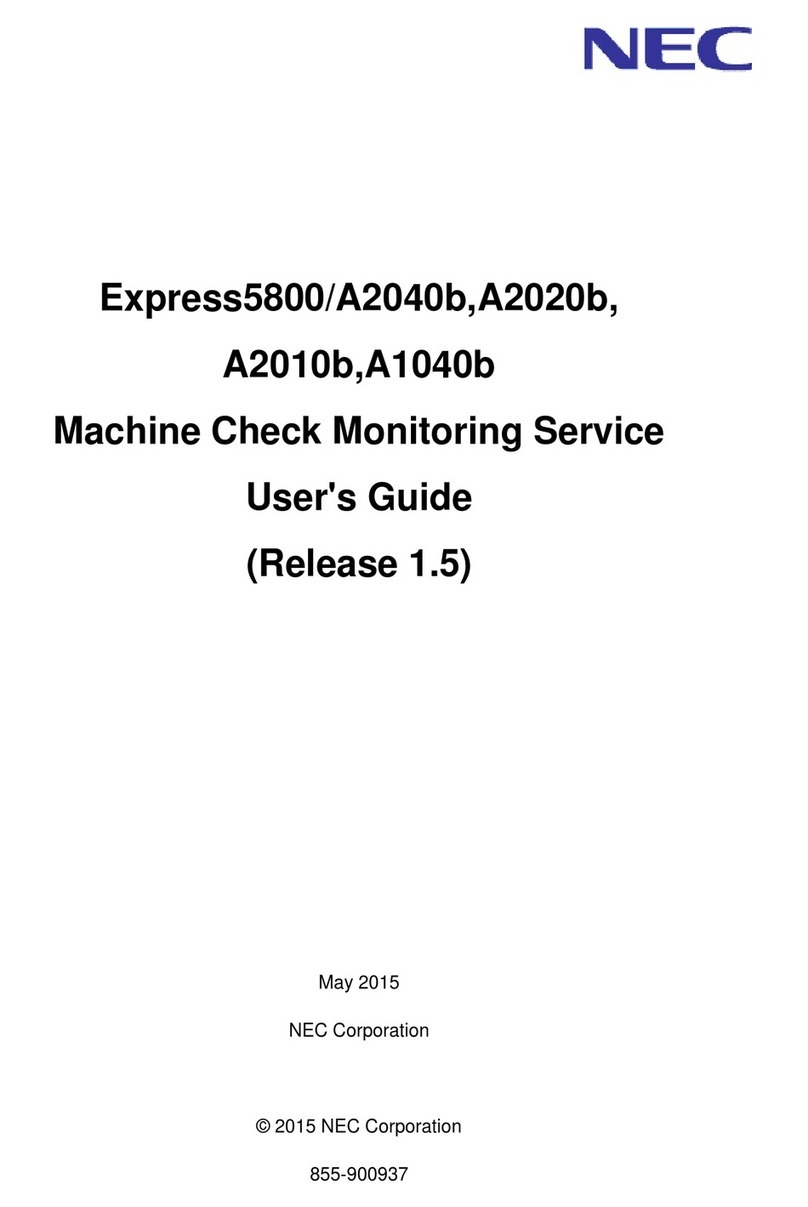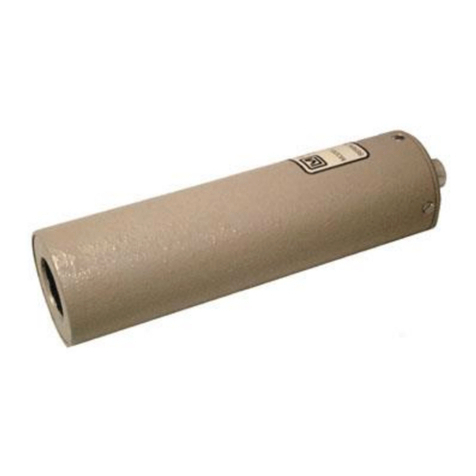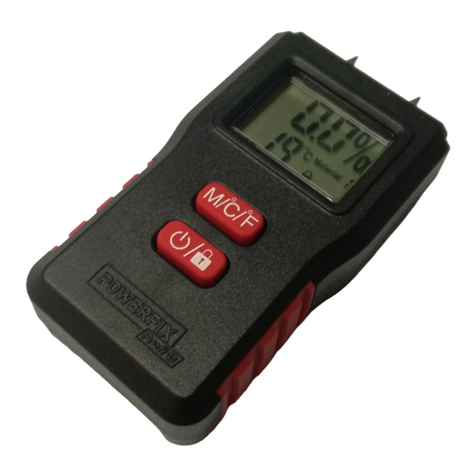Liquid Controls LectroCount LCR-II E3655 Series User manual

LectroCount LCR-II®Installation
Liquid ControLs Group An IDEX Fluid & Metering Business
Operation: EM150-20
E3655/E3656 Series

2
TABLE OF CONTENTS
The most current English versions of all Liquid Controls publications are available on our web site, www.lcmeter.com. It is the
the required language of the country, or the language of the end user to which the products are shipping. If there are questions
Publication Updates and Translations
INTRODUCTION
Safety Procedures ................................................... 3
ESD Protection......................................................... 4
.......................................................... 5
Dimensions .............................................................. 6
LectroCount LCR-II Overview .................................. 7
Meter System Overview ........................................... 8
INSTALLATION
Installation Overview ............................................... 10
LectroCount Ground Strap Kit................................. 12
LectroCount LCR-II Mounting ................................ 14
Routing LCR-II Data and Power Cables ................ 17
Electronic Temperature Volume Compensation ...... 18
Valves...................................................................... 19
Optical Air and Vapor Eliminators............................ 23
Pulse Output Device (POD) .................................... 24
..................... 25
Remote Display and Auxiliary Outputs.................... 26
Printers.................................................................... 27
Data Communications............................................. 28
Power Installation.................................................... 29
Post Installation....................................................... 32
BILL OF MATERIALS
External Components.............................................. 33
Internal Components............................................... 34
CPU Board .............................................................. 35

3
SAFETY PROCEDURES
!WARNING
maintenance of equipment and/or systems in accordance with all applicable codes and ordinances.
and follow the proper procedures
!WARNING
in order to maintain Class I, Division 2 ratings. This may require using connections or other adaptations in accordance
WARNING: Explosion Hazard -
Substitution of components may impair suitability for Class I, Division 2 applications.
WARNING: Explosion Hazard -
WARNING: Explosion Hazard -
Before disassembly of any meter or accessory component:
ALL INTERNAL PRESSURES MUST BE RELIEVED AND ALL LIQUID DRAINED FROM
THE SYSTEM IN ACCORDANCE WITH ALL APPLICABLE PROCEDURES.
-Close all liquid and vapor lines between the meter and liquid source.
Safety Rules Regarding LPG, refer to NFPA Pamphlet 58 and local authorities.
Failure to follow this warning could result in property damage, personal injury, or death from re and/or explosion, or other
hazards that may be associated with this type of equipment.
!WARNING
Be Prepared
Observe National and
Local Codes
Safely Evacuate
Piping System

4
ESD PROTECTION
Potential Damages Caused by Exposure to ESD
To prevent electrostatic discharge (ESD) damage to LectroCount register electronic components, all LectroCount
electrical system).
Epson printer.
Liquid Controls’ Grounding Kits
seats allow static electricity to “bleed off” the driver and the seat before it can build up, discharge, and damage the
The LectroCount Ground Strap Kit will be included with all future LCR-II LectroCount register shipments, and the
ESD Procedural Precautions and LectroCount Register Grounding
Installation Notes
followed to safeguard against ESD damage.
REGISTERS NOT MOUNTED DIRECTLY TO THE METER
In typical LectroCount installations where the LectroCount register is mounted directly to the meter, the LectroCount
LectroCount housing is grounded properly.
Alternate grounding method
1 ohm). Use a 12ga. or larger stranded wire.
FIXED INSTALLATIONS
require metal conduit to the conduit hubs for the wiring. The metal conduit provides the necessary ESD protection.
Divison 2 installations can ground the LectroCount housing by using shielded cables (or wiring) run through liquidtite
installations require and additional grounding method to ensure a proper ground.
1 ohm). Use a 12ga. or larger stranded wire.
Follow this procedure each time you open a LectroCount register or approach a LectroCount register with the door open.
Before opening the LectroCount register and handling the CPU board, it is important to discharge any ESD that may have built up on
your person. To discharge ESD from your person, touch a well-grounded point such as the LectroCount register housing, the meter,
the truck piping, or the bumper. When the maintenance is complete and the LectroCount register door is closed, the CPU board is
protected from ESD by the LectroCount register housing which is grounded to the chassis.
.ESD Precaution .
Opening LectroCount Registers

5
SPECIFICATIONS
Materials of Construction
Weight
Display Elements
Cable Entry
Temperature Rating
Mechanical Input/Output
Communications
RS-485: SAE J1708 standard
Auxiliary 1 Output
Current sinking capability:1 A
Auxiliary 2 Output
Current sinking capability:150 mA
Solenoid 1 Output
Voltage: 10.2 to 27.2 VDC
Current maximum:1 A maximum
Solenoid 2 Output
Voltage: 10.2 to 27.2 VDC
Current maximum:1 A maximum
Solenoid 3 Output
Voltage: 10.2 to 27.2 VDC
Current maximum:1 A maximum
Optical Sensor
Voltage: 10 to 28 VDC
Current maximum:0.5 A maximum
RTD Temperature Probe
Printer (Epson Model 295)
Voltage: 24 VDC
Current
maximum:0.8 A
Operating Temperature:
Remote Electronic Display
sinking capability
Electrical
Input Voltage
Voltage: 9 to 28 VDC
Current maximum:4.5 A maximum
(including solenoid valves)
Pulse Output
Voltage peak to peak:5 to 28 V
Frequency maximum:
Scale Pulse Output
Current sinking capability:150 mA
Electrical Protection

6
DIMENSIONS
Side
Front
top
15"
9.94"
5.19"
LectroCount LCR-II
13"
Ø 7.5"
8.04"
10.5"
70º
rear

7
LectroCount LCR-II Overview
GENERAL INFORMATION
The Liquid Controls LectroCount LCR-II is a
microprocessor-based electronic meter register that
LCR-II can control a meter system as a stand-alone
unit, or it can be used as a slave to a host contoller such
as a process controller or an in-cab data management
system.
INPUTS
displacement meter, the LCR-II receives a pulse input
from an internally mounted quadrature pulser that is
and Smith positive displacement meters). This pulse
output can also come from a Liquid Controls external
POD pulser or another pulse generator. In addition to
the pulse input, the LCR-II is equipped with an input for
a temperature probe, so the register can compensate
volume measurements according to the temperature of
the product.
OUTPUTS
The LCR-II is equipped with a scaled pulse output, two
auxiliary outputs, and two solenoids outputs. These
outputs allow the LCR-II to communicate with meter
system accessories such as solenoid-controlled valves,
optical air and vapor eliminators, remote displays,
printers, and third-party devices.
COMMUNICATIONS
The LCR-II is capable of interfacing in RS-232 and RS-
485 communication protocols.
HOUSING
The LectroCount LCR-II housing and base are aluminum
die cast and powder coated. The hinge door design
provides easy access to the internal connections and
LectroCount LCR-II to provide secure cable connections
for all external devices.
DISPLAY
NAVIGATION KEYS
SELECTOR SWITCH
The selector switch controls basic stop, run, print, and
shift print delivery functions. To perform calibration
functions, the cover plate must be removed and the
FUNCTIONALITY AND OPERATION
The principle functions of the LectroCount registers
include:
(ETVC) (with proper accessories)
LCR-II OVERVIEW

8
M7 Meter with LectroCount LCR-II Electronic Register, Optical
Optical Air Eliminator
Mechanical Air
Capacity Strainer
Optical Vapor Eliminator
3
Valve
ETVC Kit
E-7 Valve
Meter System Components
METER SYSTEM
A Liquid Controls meter system not only accurately
measurement. Optimal systems typically include an air/
vapor eliminator, strainer, meter, register, and control
valve. The LectroCount LCR-II, a register, serves as the
central controller of the meter system. Most components
in the meter system are hard wired to the LCR-II via data
communication cables. See manual M100-10.
AIR/VAPOR ELIMINATORS
Air and vapor eliminators sense and remove air or
vapor in the piping before it enters the metering system,
ensuring that only liquid will pass through the meter for
measurement. Mechanical air eliminators do not require
a data connection to the LectroCount LCR-II (in LPG
applications, they are often plumbed to a 3-way solenoid
which is wired to the LectroCount LCR-II). Optical air
eliminators use an optical sensor to monitor liquid levels
and a solenoid-actuated valve to turn the vapor vent on
and off. The optical sensor and the solenoid valve are
connected to the LectroCount LCR-II by separate data
cables. See manuals M300-20 and M300-21.
VALVES
open the line to initiate custody transfers and close the
line to stop custody transfers. Some valves can partially
shut off and provide accurate preset deliveries. Many
valves use solenoid-operated valves that require a hard
wired data connection to the LectroCount LCR-II. See
manuals M400-11 and M400-40.
ELECTRONIC TEMPERATURE VOLUME
COMPENSATION (ETVC) KIT
In order to perform temperature compensation
equations, the LectroCount LCR-II relies on a
temperature probe inserted into the strainer housing.
this manual.
METER SYSTEM OVERVIEW

9
METER SYSTEM OVERVIEW
Epson Slip Printer Epson Roll Printer
Remote Display
POD Pulser
DMS i1000
Lap Pad
Meter System Components
PULSE OUTPUT DEVICE
The Liquid Controls Pulse Output Device (POD pulser)
converts the rotary motion of a positive displacement
used in place of an internal pulser. They are ideal for
applications that require explosion proof components in
which the LectroCount LCR-II register is installed at a
distance from the meter. The POD pulser requires hard
wired data communication with the LectroCount LCR-II.
See manual EM300-11.
The differential pressure transducer, common in
aviation applications, monitors the differential pressure
coalescer. The highest differential pressure reached
during the custody transfer will then be printed on the
shut down a custody transfer if the differential pressure
meets a preprogrammed differential pressure shutdown
communication with the LectroCount LCR-II. See
manual EM300-40.
DATA MANAGEMENT SYSTEMS
The DMS i1000 is an in-cab computer with a heavy duty
software. The DMS i1000 must be hard wired to the
LectroCount LCR-II. See manuals EM200-10 and
EM200-11.
LAP PAD
The lap pad programs and displays all operational
functions of the LectroCount LCR registers. It has a
the lap pad, the printer, and the LCR printer cable.
LECTROCOUNT REMOTE DISPLAY
The 2¼" digits on the Liquid Controls LectroCount
Remote Display allow operators to view the register
wire data communication with the LectroCount LCR-II is
required. See manual EM100-13.
PRINTERS
of custody transfers. The Epson slip printer is considered
the industry standard for many applications. Multi-
for both customers and business records. The Epson roll
printer is ideal for recording multiple custody transfers
over an extended time frame.

10
INSTALLATION OVERVIEW
Installation Overview
If the LectroCount LCR-II was ordered as part of a meter system, it will arrive mounted on the meter and prewired to
the ETVC probe, air eliminator, and valve.
Installation overview for LCR-II ordered with meter system:
5. Mount printer and connect printer data cable. Page 27
6. Connect the LCR-II and the printer to power supply. Page 29
7. Setup and calibrate the LCR-II. Refer to manual EM150-11.
to all of the components.
Installation overview for LCR-II ordered without meter system:
2. Mount the LCR-II to the meter. Page 14
5. Mount printer and connect printer data cable. Page 27
6. Connect the LCR-II and the printer to power supply. Page 29
7. Setup and calibrate the LCR-II. Refer to manual EM100-11.
Before installation, check your shipment against the
packing list and ensure that no parts are missing. The
packing list is inside the red information packet along with
the Installation and Operation Manuals.
Check Each Shipment
Specic installation requirements will vary with the model of the truck, the physical layout
of a xed installation, the conguration of any existing metering equipment, the options
selected, and the type of uid being metered
Installation Requirements Vary
This manual explains and details the mechanical installation of the
LectroCount LCR-II and the temperature probe as well as the electrical and
data installation of all components that connect to the LCR-II. For additional
installation information, refer to the manuals of the other components. All
manuals are available at www.lcmeter.com.
This Manual Includes


12
LECTROCOUNT GROUND STRAP KIT
LectroCount Ground Strap Kit
All seat cushions are grounded in a similar manner.
The illustrations on the next page detail the following
seats.
To ground a truck seat:
cab. These seats will typically have pivot points, hinges,
already exist, drill a 9/32” hole in the seat frame.
3. Attach one end of the ground strap to the seat frame
provided.
in the part of the seat frame—above all pivots and
interfere with the ground path between the seat cushion
and the ground strap.
4a. If the seat cushion has a wooden base, use a wood
screw and washer to attach the strap lug to the bottom
of the seat at a point where the seat fabric is attached to
the wood. There must be good contact between the seat
fabric and ground strap lug.
below).
Remove any dirt or oxidation from the ground strap
contact point. Lock washers should penetrate any
paint to ensure a good electrical connection.
Ensure a Good Ground
6
1
2
3
3
5
8
4
9
LectroCount Ground Strap Kit - 82185
Install the LectroCount Ground Strap Kit
before installing the LectroCount register.
.ESD Precaution .
Some truck seats, typically passenger seats, are
not adjustable and do not require grounding.
Grounded Passenger Seats

13
TYPICAL ADJUSTABLE TRUCK SEATS & GROUND CHECK
Checking for a Good Ground
To check for a good ground connection:
contact on both ends of the ground strap. Clean any paint, dirt, or oxidation
attach the ground strap to a different ground point. Repeat the process until
If the multimeter reads “” or “”, typically,
one of the accessories is still on.
Turn Off Accessories
AIR CUSHION SEAT -
AIR CUSHION SEAT -
BENCH SEATS -
(Manufacturer Standard or equivalent)
Typical Adjustable Truck Seats

14
Smith Adapter
LCR-II with LPG
Meter System
LCR-II MOUNTING
Mounting Overview
Typically, the LectroCount LCR-II is mounted directly
require the register be mounted away from the meter.
If the meter is equipped with an external POD pulser,
the LCR-II can be mounted up to 1000 wire feet (304
meters) away from the meter (actual distance depends
Adapters are available for other PD meters such as
includes installation instructions.
Tips for mounting an LCR-II
:
the internal components.
attached to the pulser drive shafts.
and selector switch can be easily operated.
Relieving Internal Pressure
!WARNING
Relieving Internal Pressure Procedure for LPG and NH3Meters
relieve product pressure in the system. Product will drain
from the meter system.
7. As product is bleeding from the differential valve, slowly
Repeat this step until the product stops draining from the
on the system.
2. Close the valve on the vapor return line.
3. Close the manual valve in the supply line on the inlet
side of the meter. If no manual valve exists on the inlet
line.
end of the supply line.
Serious injury or death from fire or explosion could result in performing maintenance on an
improperly depressurized and evacuated system.

15
LCR-II MOUNTING
LC Meter
O-Ring
Lower register
and bolt down
Insert cotter
pin
Place shaft
adapter on
drive shaft
LectroCount LCR-II
Gallons
LCR-II Bolt Pattern
LC Meter Compensated
LC Meter
Mounting Bolt Pattern
The LectroCount LCR-II base casting contains eight bolt
holes in an industry standard bolt pattern. The holes are
If the installation necessitates that you fabricate a
LC Meters
Remove Existing Registration Equipment
See Warning on pg.
14.
2. Remove the four bolts on the bottom that fasten the
register to the meter.
4. If the meter has a Temperature Volume Compensator
(TVC), remove it as well.
Mount the LectroCount LCR-II
1. Place the end of the shaft adapter on the pulser drive
shaft located on the bottom of the register.
2. Place the cotter pin through the hole, and bend open the
ends of the cotter pin.
3. Lower the register onto the meter, and insert the shaft
adapter onto the hex shaft on the meter.
4. Securely bolt down the register.
Apply anti-seize to all bolt threads to ensure
easy removal at a later date.
Apply Anti-seize

16
LCR-II MOUNTING
Neptune Meter Compensated
Insert cotter
pin
Insert cotter
pin
Bolt plate
and flange
to register
Place adapter
on drive
shaft
Bolt flange
to meter
Place fork
and extension
on end of
adapter
LectroCount LCR-II
Gallons
Neptune Meter
Insert cotter
pin
Bolt down
bracket to
meter
Place fork
and extension
on drive shaft
Lower register
and bolt onto
bracket
LectroCount LCR-II
Gallons
with Temperature
Compensation
Extension
Neptune Meters
Remove Existing Registration Equipment
See Warning on pg.
10.
2. Remove the mechanical register from the meter.
3. Leave the star-shaped gear and the two square-head
studs.
4. Remove the bellows from the front of the meter.
5. Remove the compensator.
Mount the LectroCount LCR-II
on the pulser drive shaft located on the bottom of the
LCR-II.
Mount the LectroCount LCR-II onto previously
temperature compensated Neptune meters
1. Place the shaft adapter on the pulser drive shaft under
the LCR-II.
2. Place the cotter pin through the hole, and bend open the
ends of the cotter pin.
3. Pass the other end of the shaft adapter through the
4. Loosely bolt to register.
using two more cotter pins.
Installation kits 82641 (E-26 series) & 82642 (E-36
series) are specically designed for previously temperature
compensated Neptune meters.
Apply anti-seize to all bolt threads to ensure
easy removal at a later date.
Apply Anti-seize
When the register is lowered onto a Neptune meter, make sure
the drive fork is not pressed against the star gear on the meter.
There must be a small gap between these two parts. To lower
the star gear, loosen the set screw on the side of the star gear.
Failure to do so will eventually damage the internal pulser and/
or the meter gear train.
Star Gear and Drive Fork
with Temperature
Compensation

17
ROUTING LCR-II DATA AND POWER CABLES
Data and Power Cable
The LCR-II shipment typically includes a gray 40' power
During
installation, follow these guidelines and ensure the
cables remain undamaged.
Guidelines for routing the data and power cables
on the outside of the truck
automotive plastic corrugated split loom or through
pass through the cab wall, meter box, etc.
re-installing.
proper tool for stripping off the insulation on the cables.
Instructions for hooking up
power to the printer and the
LCR-II begin on pg. 29.
Guidelines for routing the data and power cables
inside the cab
cables before beginning.
vehicle components.
locations where they may be vulnerable to damage.
cables can be easily connected.
the cable.
Routing LCR-II Data and Power Cables
ETVC Kit
Solenoid
Valve
LectroCount
LCR-II Conduit or
Split
Printer
Data Cable
Printer
Printer
Power Cable
LCR-II
Power Cable
Fuse Panel
(Accessory) 7.5A In-Line Fuse

18
ELECTRONIC TEMPERATURE VOLUME COMPENSATION
Thermowell Kit
Screw into the strainer cover
RTD Temperature Probe (71130)
Coat the probe length
with the copper grease
provided in kit.
Thermowell
Foam Washers
Seal Gasket
Slotted Disk Union Fitting
Run probe through
conduit
Connect wires
to J14 connector
ETVC Kit
Weights & Measures
Thermowell Port
Temperature Probe
Fitting
Weatherproof conduit to LCR-II
LectroCount LCR-II
Gallons
ETVC Conduit
TEMPERATURE PROBE J14
White (20)
White (21)
Red (22)
Red (23)
To install the ETVC kit:
See Warning on pg.
14.
2. Remove the old strainer cover.
grease).
6. Bolt the strainer cover in place. Make sure the Weights &
Measures thermowell port is at the top of the cover.
on the left).
8. Coat the entire probe length with the copper grease
provided. Insert and re-coat the probe 2 or 3 times to
provide a uniform coating inside the thermowell and to
ensure proper heat transfer from the liquid to the probe.
middle of the strainer cover. The angled tting at the top
of the cover is for Weights & Measures purposes. See
Step 6.
on connector J14.
Disconnect the power before
working on the CPU board.
Disconnect Power
Electronic Temperature Volume Compensation (ETVC) Installation
to provide protection for the RTD temperature probe wire between the strainer cover and the LCR-II.

19
VALVES
A2847-11 Solenoid-Operated
S1 Solenoid
LectroCount LCR-II
Gallons
Electro-Pnuematic
Preset Valve
Single Stage Electro-Pnuematic
Valve with V-7 Valve
S1 Solenoid
V-7 Valve Electro-Pnuematic
Actuator
LectroCount LCR-II
Gallons
Single Stage
Single Stage Systems
Liquid Controls’ Valves Overview
and wired to the LCR-II at the factory. Electronic control
meter systems already in service. These valves will need
refer to the valve manual. This manual includes wiring
instructions for the valves.
operated valves close off and open the bypass pipes.
in order to open and close the control valve. These
solenoid-operated valves must be wired to the LCR-II
CPU board during installation.
Liquid Controls offers single stage and two stage
electronic valves. Single stage valves have one solenoid
valve (S1) and two positions—an open position and a
closed position. Two stage valves have two solenoid
by the S2 solenoid and initiated shortly before the
register reaches a preset value.
SINGLE STAGE VALVES
The three most common Liquid Controls meter systems
and an electro-pnuematic valve with an S1 solenoid.
A2847-11 Valve
This single stage control valve has a S1 solenoid-
operated valve located at the meeting point of three
external pipes: one pipe from the inlet side of the valve,
outlet side of the valve. This valve is typically used in
A2843 Valve and 3-Way Solenoid
The 3-way solenoid-operated valve—mounted directly
LCR-II—serves as a S1 solenoid-operated valve. The
3-way solenoid-operated valve is located at the meeting
point of two pipes from the vapor eliminator (one for
3.
The LCR-II is also compatible with many other brands
and types of valves.

20
VALVES
S1 Solenoid
E-7 Valve
S2 Solenoid
LectroCount LCR-II
Gallons
Two Stage (S1 and S2) E-7 Valve
S1 Solenoid
S2 Solenoid
LectroCount LCR-II
Gallons
Two Stage (S1 and S2)
Two Stage Systems
2
A2859-11
Solenoid-Operated
E-7 Valve
A2848-11
Solenoid-Operated
TWO STAGE VALVES
The three most common Liquid Controls meter systems
valve (A2859-11) and a 3-way solenoid on the LCR-II,
and an E-7 valve with a S1 and a S2 solenoid-operated
valve.
A2848-11 Valve
This two stage control valve has a S1 and a S2 solenoid-
operated valve. The S1 solenoid-operated valve is
located at the meeting point of three bypass pipes: one
pipe from the inlet side of the valve, one from the top
valve. The S2 solenoid valve is located on a bypass pipe
that connects the inlet and outlet sides of the control
valve. It opens while the control valve is closed to supply
applications.
A2859-11 Valve and 3-Way Solenoid
A two stage valve with a S2 solenoid-operated valve
the LectroCount LCR-II. The 3-way solenoid-operated
valve is located at the meeting point of two pipes from
the vapor eliminator (one for eliminated vapor and
a bypass pipe that connects the inlet and outlet sides
of the control valve. It opens while the control valve is
3.
E-7 Valves
A two stage valve with a S1 and a S2 solenoid-operated
closed valve using channels molded into its housing.
Single Stage Valves (cont.)
A2700 Series Electro-Pnuematic Valve
Electro-pnuematic valves use a S1 solenoid-operated
valve mounted to a pneumatic actuator to open and
close a V-7 valve. These valves are typically used in high
This manual suits for next models
15
Table of contents
Other Liquid Controls Measuring Instrument manuals
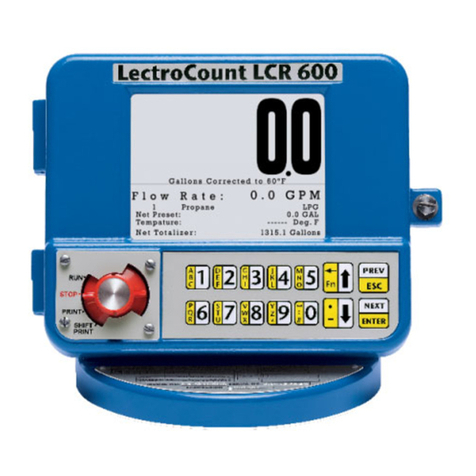
Liquid Controls
Liquid Controls LectroCount LCR 600 User manual
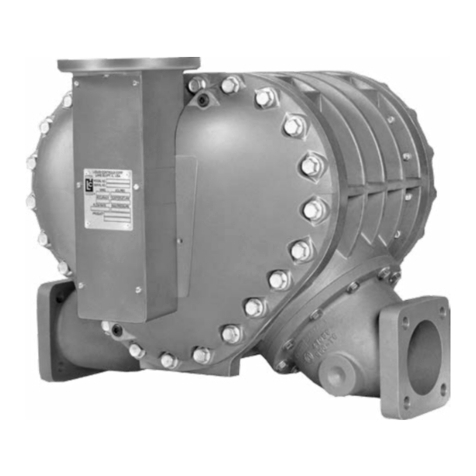
Liquid Controls
Liquid Controls M Series User manual

Liquid Controls
Liquid Controls Avery-Hardoll BM Series User manual
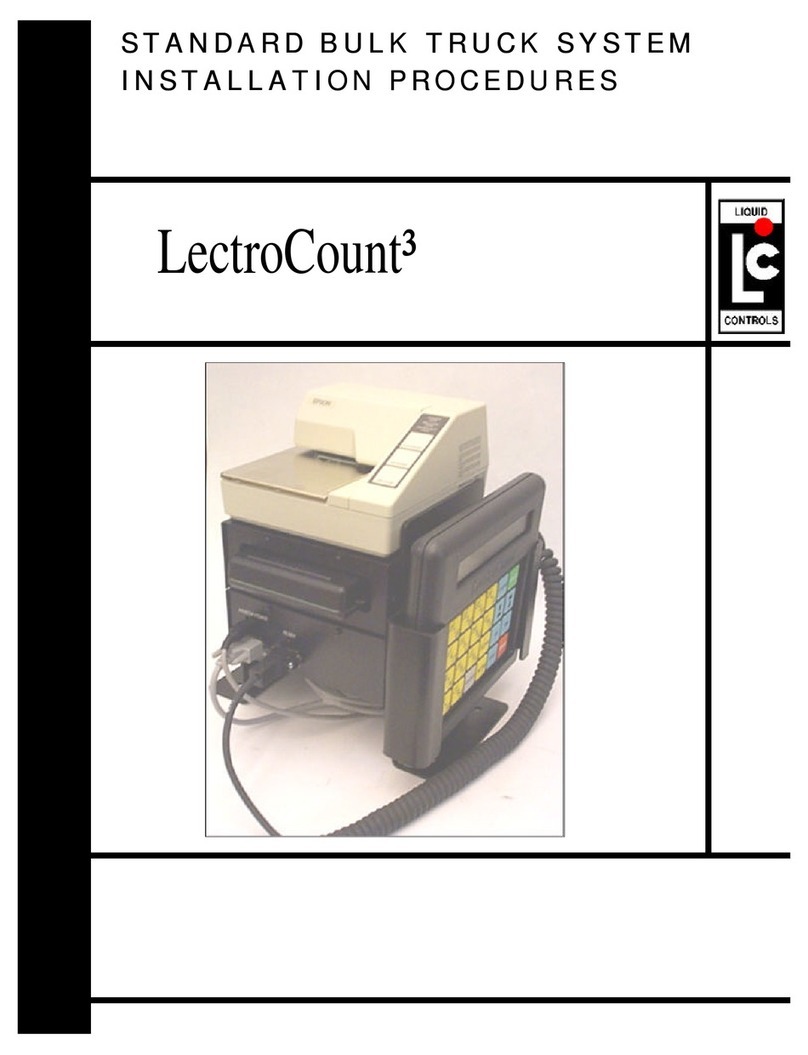
Liquid Controls
Liquid Controls LectroCount3 Reference guide
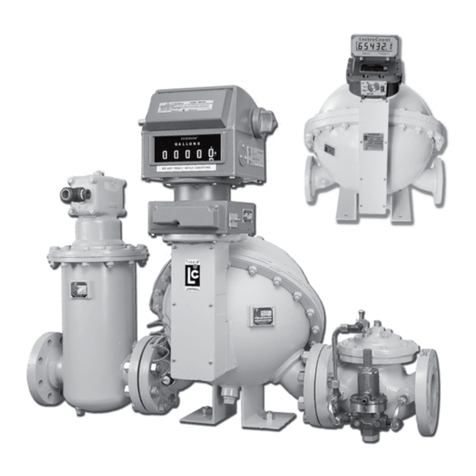
Liquid Controls
Liquid Controls MS Series User manual
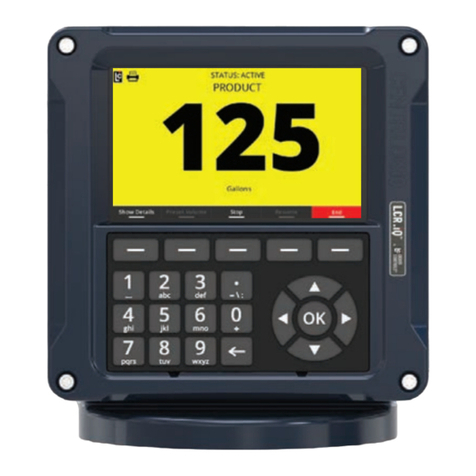
Liquid Controls
Liquid Controls CENTRILOGiQ LCR.iQ Manual instruction

Liquid Controls
Liquid Controls M Series User manual
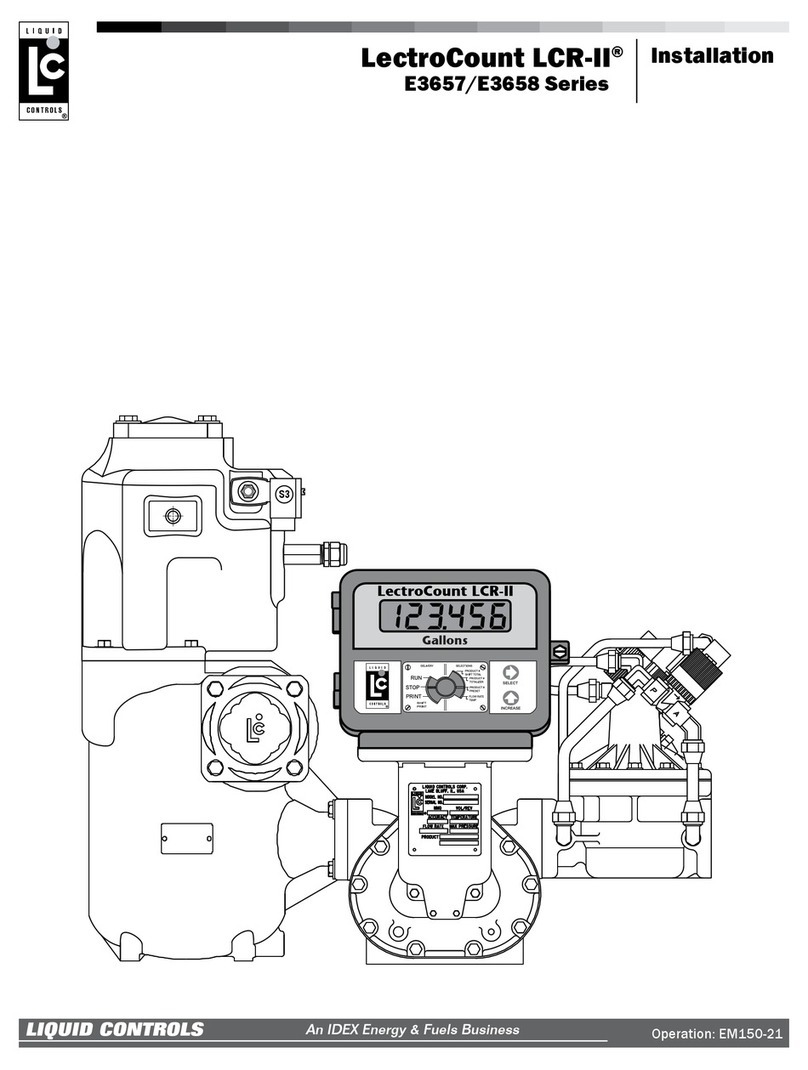
Liquid Controls
Liquid Controls LectroCount LCR-II E3657 Series User manual
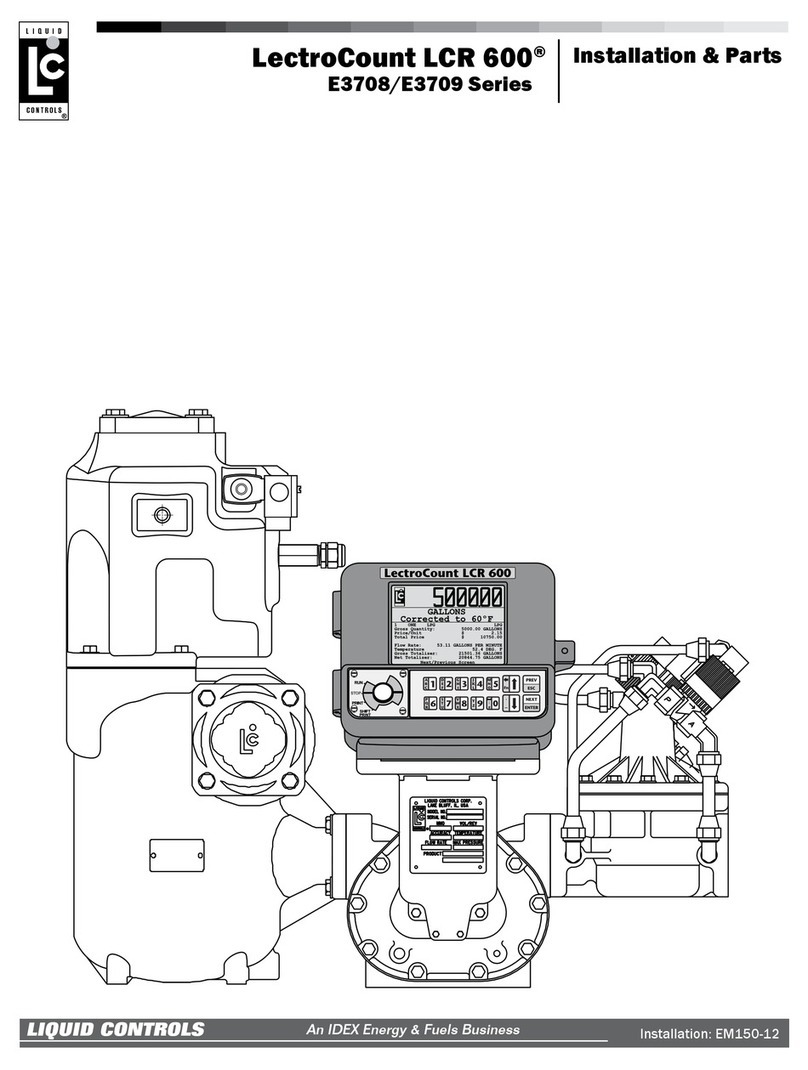
Liquid Controls
Liquid Controls LectroCount LCR 600 E3708 Series User manual

Liquid Controls
Liquid Controls A8981 User manual
